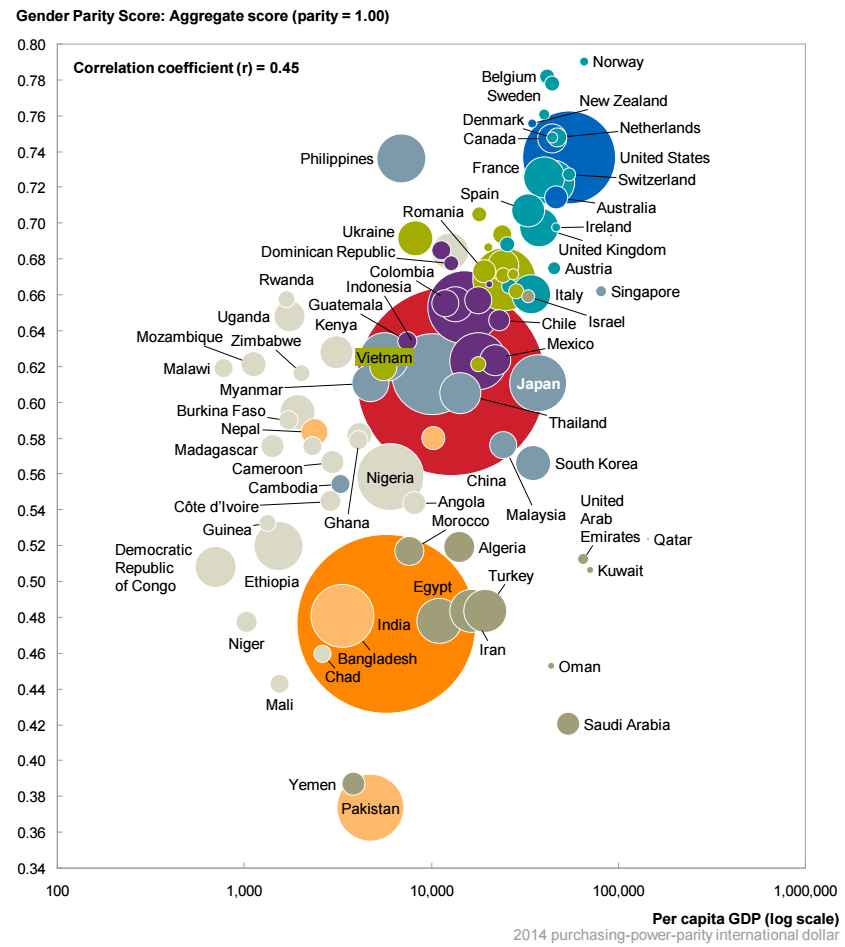Fixing gender inequality would lead to $28 TRILLION in global growth

Spencer Platt / Getty
In a recent report, the bright minds at the McKinsey Global Institute quantified gender equality around the world.
A robust trend emerged.
The greater the gender parity in a country — as measured by "equality in work, essential services and enablers of economic opportunity, legal protection and political voice, and physical security and autonomy" in the report — the greater the GDP per capita.
You can see it in a country-per-country breakdown:

Spencer Platt / Getty
Save for socially conservative oil states like Saudi Arabia, there's a strong correlation between how gender-equal a country is and how productive it is.
The mechanism is a simple one: when more people are participating in a country's economy, the greater the yields.
The above graph is one data point among many that helps the authors of "The Power of Parity" study make the claim that adding women to the workforce isn't just a social good, but an economic boon.
"We consider a 'full-potential' scenario in which women participate in the economy identically to men, and find that it would add up to $28 trillion, or 26%, to annual global GDP in 2025 compared with a business-as-usual scenario," say the McKinsey research team.
"This impact is roughly equivalent to the size of the combined US and Chinese economies today," they say.
Why the massive increase?
Because, according to the McKinsey analysis, while women account for 50% of the working-age population, they contribute just 37% of the global GDP.
Some regions are especially extreme. In India, Africa, and the Middle East, women contribute between 17% and 18% of each region's GDP. Conversely, women in North America, China, and Eastern Europe contribute between 40% and 41%.
The McKinsey report that three main things would correct for the disparity:
• "Women do not participate in the labor force in the same numbers as men; increasing the labor-force participation of women accounts for 54 percent of potential incremental GDP."
• "Women work fewer hours than men (in the labor force) because many are in part-time jobs; this could be driven partly by choice and partly by their inability to do full-time work given family- and home-based responsibilities. Closing this gap would generate 23 percent of the GDP opportunity."
• "Third, women are disproportionately represented in lower-productivity sectors such as agriculture and insufficiently represented in higher productivity sectors such as business services. Shifting women into work in higher productivity sectors on a par with the employment pattern of men would contribute another 23 percent of the total opportunity."
The data gives some numbers to a long-held conviction within the women's rights movement. Namely, that a society holding women back holds its entire economy back.
NOW WATCH: The first computer programmer was a woman and the daughter of a famous poet

